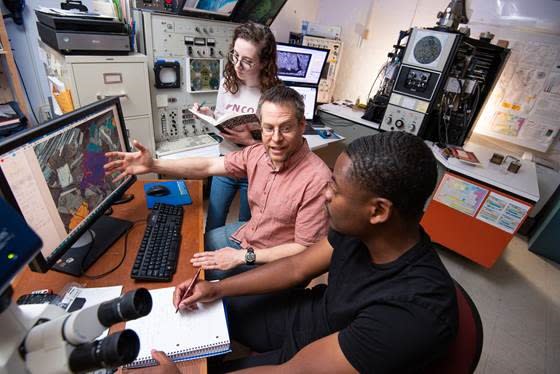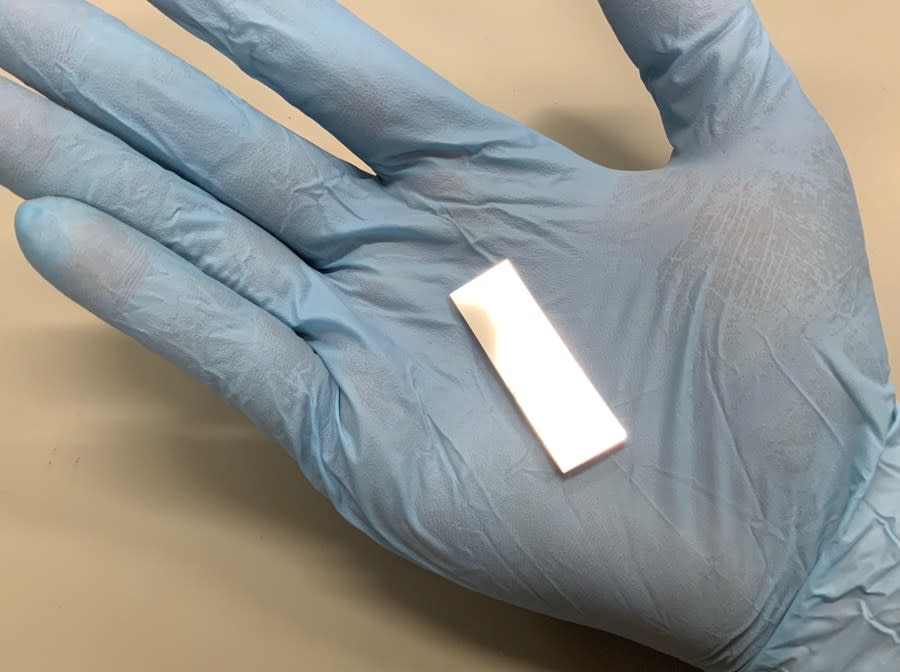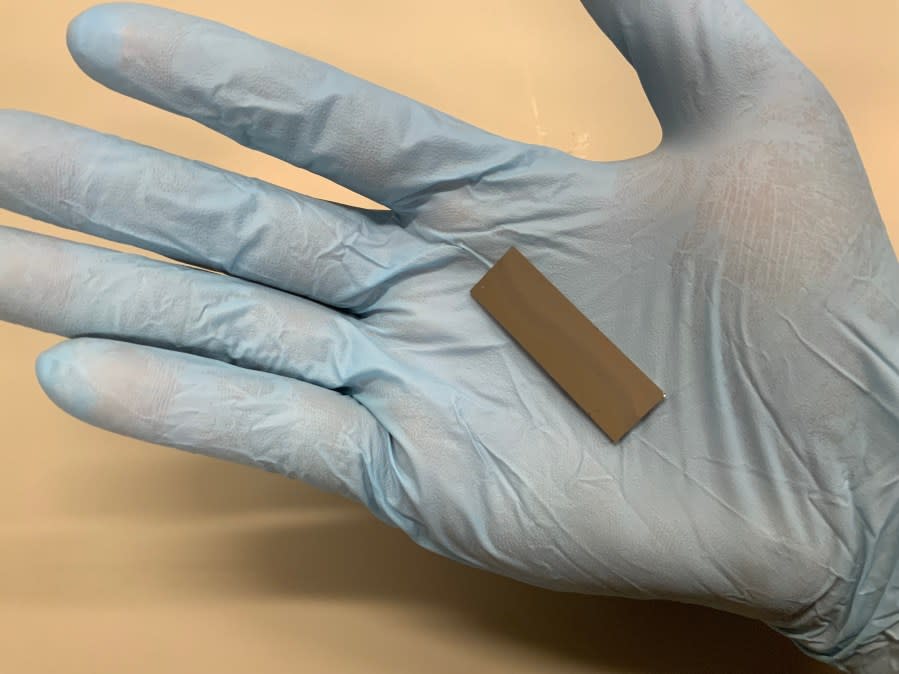Rare Earth Element Analysis Center at Concord University reaches developmental milestone

- Oops!Something went wrong.Please try again later.
ATHENS, WV (WVNS) — Concord University reached a milestone with the installation of a high-performance X-ray-diffracting crystal at the Rare Earth Element Analysis Center.
The high-performance X-ray-diffracting crystal was manufactured by Rigaku Innovative Technologies of Auburn Hills, Michigan, and installed in the ARL electron microprobe at Concord University by Advanced Microbeam Inc. of Vienna, Ohio. There are only two of these crystals in the world, one at Advanced Microbeam, and now a second at Concord University.
Princeton Fire Department receives new equipment
This addition helps the growth of the Concord Materials and Rare Earth Element Analysis Center, and is the start of many upgrades to the electron microscopy and microanalysis facilities at Concord University that are federally funded.
West Virginia is on the cutting edge of research and innovation, and this exciting milestone is further proof of that. I’m proud to have helped secure a Congressionally Directed Spending award to support the Concord Materials and Rare Earth Element Analysis Center and its newly acquired X-ray-diffracting crystal. I look forward to seeing the groundbreaking advancements this project will undoubtedly continue to produce and, as a member of the Senate Appropriations Committee, I will continue advocating for resources to bolster scientific research and support our West Virginia universities.
Dr. Joseph Allen and Dr. Stephen Kuehn, both Geology and Earth Science professors at Concord University, manage the project. In the July of 2024, a national conference presentation, called “Improved EPMA Analysis of Rare Earth and Trace Elements Using a New Precision Germanium WDS Crystal,” will be given by Dr. Kuehn at the Microscopy and Microanalysis 2024 conference in Cleveland, Ohio.
Dr. Keuhn and students in lab – Photo Courtesy: Concord University x-ray diffracting crystal 1 – Photo Courtesy: Concord University x-ray diffracting crystal 2 – Photo Courtesy: Concord University
Concord University Esports to take flight in competition against Air Force Gaming
Concord University students and faculty, as well as industry and visiting researchers, will be able to use the Rare Earth Element Analysis Center to help with scientific research, economic development, and workforce training. The analytical instruments at Concord University are used for chemistry, physics, and geology classes, in addition to research projects with student and faculty members.
The only electron microprobe instrument in the Mountain State has been located at Concord University since 2010. The electron microscope is a specific type that gathers images and analyze the chemical make-up of materials as small as 1/1000th of a millimeter. When the microscope focuses on a material with a narrowly-focused beam of electricity, the X-rays that are given off reveal details about the sample.
The high-performance X-ray-diffracting crystal spreads the X-rays out much like how a prism separates visible light into rainbow colors, and does this more effectively than previously used materials. This is helpful for rare earth elements (REEs) and other chemical elements that might only have trace amounts, like those in coal refuse and coal.
Local high school robotics team wins 2024 West Virginia Robotics Teamwork State Championship
In 2022, due to funds from a grant by the U.S. Department of Education and acquired through the Congressionally Directed Spending program with help from Senator Joe Manchin, the Concord Materials and Rare Earth Element Analysis Center project was started.
Since then, an Innovation Grant awarded to Dr. Kuehn by the Science, Technology and Research (STaR) Division of the WV Higher Education Policy Commission (HEPC) in fall 2023 added to the original grant. The West Virginia Office of the Governor issued funds that partially matched the federal grant in January 2024.
So far, awarded funds for the project includes the $642,000 federal grant, the $150,000 state match, and the $40,000 Innovation Grant, to a total of $832,000.
Princeton City Park progress continues
Other plans for the microprobe lab include improvements, complementary equipment to expand material types that can then be studied, as well as the support of industry and scientific applications. Upcoming milestones include the addition of new electronics and new instrument control software with an expected delivery date of June 2024.
This gives students at Concord University the opportunity to have hands-on experiences that might not be found in other areas. Concord University is also looking to partner with entrepreneurs to show what the equipment can do.
More information about the electron microprobe laboratory and the developing Materials and Rare Earth Element Analysis Center at Concord University can be found by contacting Dr. Stephen Kuehn by email at sckuehn@concord.edu or by phone 304-384-6322.
For the latest news, weather, sports, and streaming video, head to WVNS.




